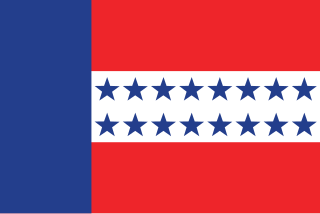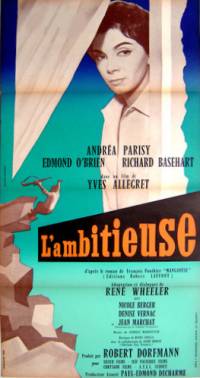
Polynesian mythology encompasses the oral traditions of the people of Polynesia together with those of the scattered cultures known as the Polynesian outliers. Polynesians speak languages that descend from a language reconstructed as Proto-Polynesian – probably spoken in the Tonga and Samoa area around 1000 BC.

Tiki culture is an American-originated art, music, and entertainment movement inspired by Polynesian, Melanesian, and Micronesian cultures, and by Oceanian art. Influential cultures to Tiki culture include Australasia, Melanesia, Micronesia, Polynesia, the Caribbean Islands, and Hawaii. The name comes from Tiki, the Māori name for the first human, often represented in the form of hei-tiki, a pendant and important taonga. The hei-tiki was often appropriated by Europeans as a commercialised good luck charm, hence the name of Tiki culture. Despite spanning over 10,000 miles and including many different unrelated cultures, religions, and languages, Tiki aesthetic is considered by some to be amalgamated into one "fantasia of trans-Pacific cultures" and "colonial nostalgia". Because of this, and the simplistic view of the Pacific taken by the aesthetic, Tiki culture has often proved controversial.

Donovan's Reef is a 1963 American adventure comedy film starring John Wayne and Lee Marvin. It was directed by John Ford and filmed in Kauai, Hawaii, but is set in French Polynesia.

Dorothy Lamour was an American actress and singer. She is best remembered for having appeared in the Road to... movies, a series of successful comedies starring Bing Crosby and Bob Hope.

The Tuamotu Archipelago or the Tuamotu Islands are a French Polynesian chain of just under 80 islands and atolls in the southern Pacific Ocean. They constitute the largest chain of atolls in the world, extending over an area roughly the size of Western Europe. Their combined land area is 850 square kilometres. This archipelago's major islands are Anaa, Fakarava, Hao and Makemo.

Jon Hall was an American film actor known for playing a variety of adventurous roles, as in 1937's The Hurricane, and later when contracted to Universal Pictures, including Invisible Agent and The Invisible Man's Revenge and six films he made with Maria Montez. He was also known to 1950s fans as the creator and star of the Ramar of the Jungle television series which ran from 1952 to 1954. Hall directed and starred in two 1960s sci-fi films in his later years, The Beach Girls and the Monster (1965) and The Navy vs. the Night Monsters (1966).

An uninhabited island, desert island, or deserted island, is an island, islet or atoll that is not permanently populated by humans. Uninhabited islands are often depicted in films or stories about shipwrecked people, and are also used as stereotypes for the idea of "paradise". Some uninhabited islands are protected as nature reserves, and some are privately owned. Devon Island in Canada's far north is the largest uninhabited island in the world.

Road to Singapore is a 1940 American semi-musical comedy film directed by Victor Schertzinger and starring Bing Crosby, Dorothy Lamour and Bob Hope. Based on a story by Harry Hervey, the film is about two playboys trying to avoid romances on the fictional island of Kaigoon, where they meet a beautiful woman. Distributed by Paramount Pictures, the film marked the debut of the long-running and popular "Road to ..." series of pictures spotlighting the trio, seven in all. The supporting cast features Charles Coburn, Anthony Quinn, and Jerry Colonna.

She Gods of Shark Reef is a 1958 B-adventure film directed by Roger Corman that was partially filmed on location in Kaua'i back to back with Naked Paradise in 1956. The film was distributed in 1958 by American International Pictures as a double feature with Night of the Blood Beast.
ʻAta is a depopulated island in the far southern end of the Tonga archipelago, situated approximately 160 kilometres (99 mi) south-southwest of Tongatapu.

A grass skirt is a costume and garment made with layers of plant fibres such as grasses and leaves that is fastened at the waistline.

White Savage is a 1943 American Technicolor South Seas adventure film directed by Arthur Lubin and starring Maria Montez, Jon Hall and Sabu. The film was re-released by Realart in 1948 on a double-feature with the same three stars in Cobra Woman (1944) and again in 1953, under the title White Savage Woman. It was choreographed by Lester Horton.
Robert Dean Frisbie was an American writer of travel literature about Polynesia.

Bird of Paradise is a 1932 American pre-Code romantic adventure drama film directed by King Vidor and starring Dolores del Río and Joel McCrea. Based on the 1912 play of the same name by Richard Walton Tully, it was released by RKO Radio Pictures.

The Restless and the Damned is a 1959 French-Australian film co produced by Lee Robinson. It was shot on location in Tahiti and the Tuamotu Islands. There are French and English-language versions.
Aggie Grey was born in Western Samoa in 1897 and died in 1988. She was a well-known hotelier and founder of Grey Investment Group and Aggie Grey's Hotel.
Today the term South Seas, or South Sea, most commonly refers to the portion of the Pacific Ocean south of the equator. The term South Sea may also be used synonymously for Oceania, or even more narrowly for Polynesia or the Polynesian Triangle, an area bounded by the Hawaiian Islands, New Zealand and Easter Island. Pacific Islanders are commonly referred to as South Sea Islanders, particularly in Australia.

Anne Chevalier was a French-Tahitanian actress, singer and dancer.

Frederick O'Brien was an American author, journalist, hobo, peripatetic world traveler, and public administrator. He wrote three best-selling travel books about French Polynesia between 1919 and 1922: White Shadows in the South Seas, Mystic Isles of the South Seas, and Atolls of the Sun. A movie was made in 1928 of White Shadows in the South Seas.

Florence Ngatokura "Johnny" Frisbie, also known as Johnny Frisbie Hebenstreit, is a Cook Islands author. Her autobiographical children's novel, Miss Ulysses of Puka-Puka (1948), was the first published literary work by a Pacific Islander woman author.
















